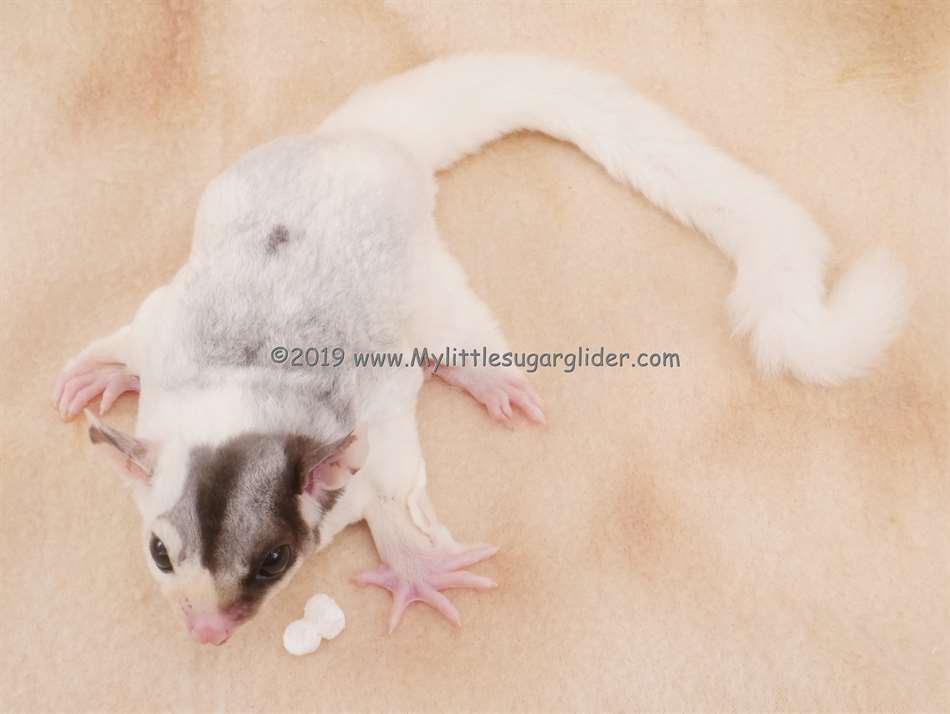Information:
Piebald Mosaics are a rare type of sugar glider, but the Wow Piebald is even more rare than that.
They are based on a rare gene called Chimera. It’s more common to see this coloration happening with cats or horses, but some sugar glider carry this disposition as well. We have been most fortunate to have a little glider come out with this amazing coloration here.
Here is the definition of Chimera by Encyclopedia Britannica:
Chimera, in genetics, an organism or tissue that contains at least two different sets of DNA, most often originating from the fusion of as many different zygotes (fertilized eggs). The term is derived from the Chimera of Greek mythology, a fire-breathing monster that was part lion, part goat, and part dragon. Chimeras are distinguished from mosaics, organisms that contain genetically different populations of cells originating from a single zygote, and from hybrids, organisms containing genetically identical populations of cells originating from a cross of two different species. Included among the different known types of animal chimeras are dispermic and twin chimeras, microchimeras, and parthenogenetic and androgenetic chimeras. (For information on the phenomenon in plants, see chimera.)
In dispermic chimeras, two eggs that have been fertilized by two sperm fuse together, producing a so-called tetragametic individual—an individual originating from four gametes, or sex cells. (Under normal circumstances, in the absence of zygote fusion, two fertilized eggs result in the production of dizygotic, or fraternal, twins.) Dispermic chimerism can also occur when a zygote fuses with a fertilized polar body (a small degenerative cell produced by egg cell division). The different tissues of tetragametic chimeras are made up of cells derived from one or both zygotes; for example, while one tissue type may consist of cells from one zygote, other tissues may consist of cells from the other zygote or may be cellular composites of both zygotes. Indications of tetragametic chimerism include eyes differing in colour, patchwork skin coloration, and ambiguous external genitalia, which is a sign of hermaphroditism (having both male and female reproductive organs). In most instances, however, there are no observable symptoms of tetragametic chimerism, and the condition is detected only through extensive genetic analysis when standard tests, such as histocompatibility testing for tissue matching prior to organ transplantation, turn up unusual results.
When two zygotes do not undergo fusion but exchange cells and genetic material during development, two individuals, or twin chimeras, one or both of whom contain two genetically distinct cell populations, are produced. The most widely known examples of twin chimerism are blood chimeras. These individuals are produced when blood anastomoses (connections) form between the placentas of dizygotic twins, thereby enabling the transfer of stem cells between the developing embryos. When blood chimerism involves male and female twins, female exposure to male hormones results in freemartin syndrome, in which the female is masculinized; this commonly is seen in cattle and rarely in humans. In human blood chimeras of the same sex, chimerism may be detected through routine blood typing, when unexpected results prompt further genetic investigation.
Special Remarks:
This special lady is Eve. She is my very first Chimera sugar glider.

86-A-0086



